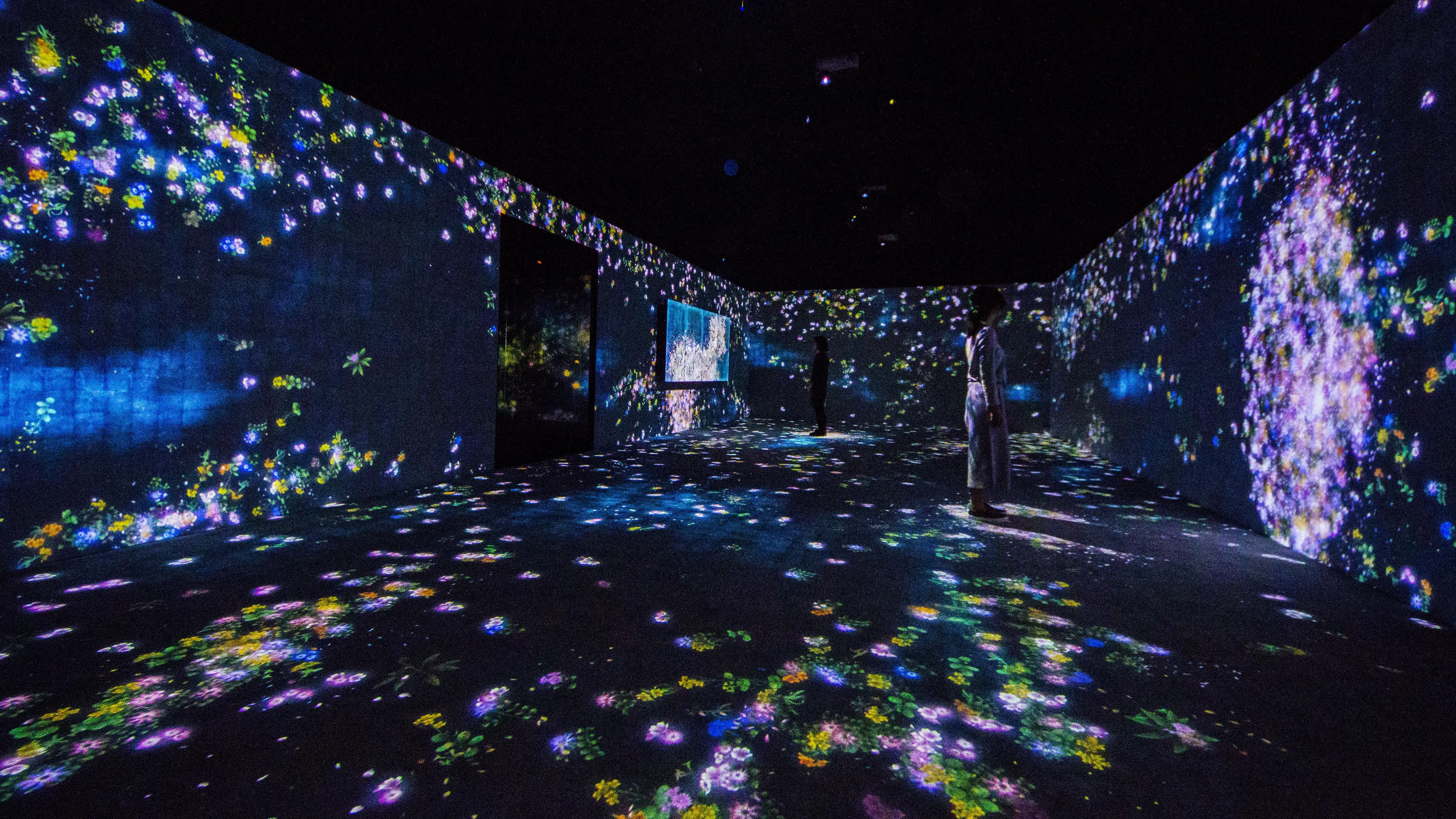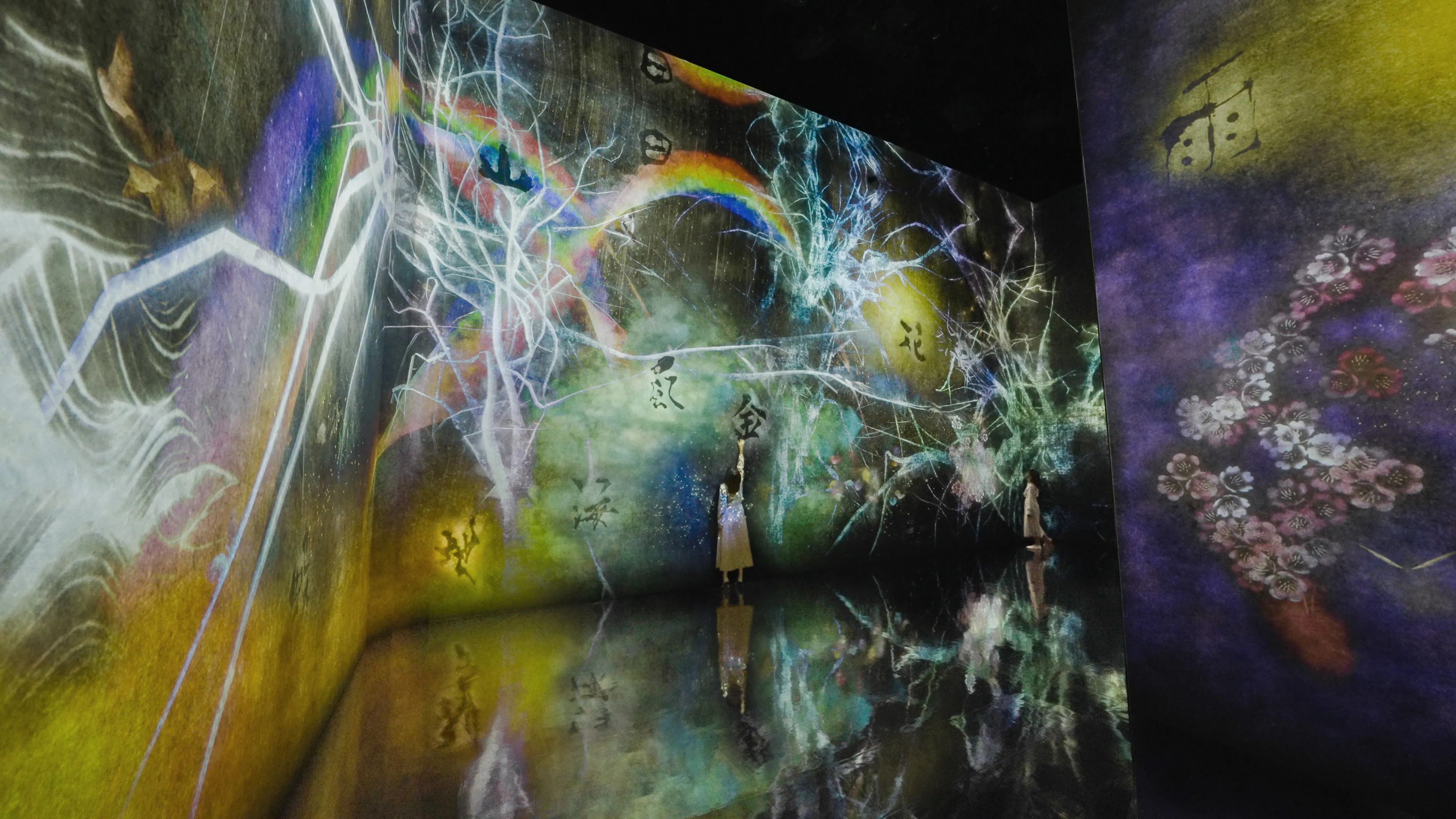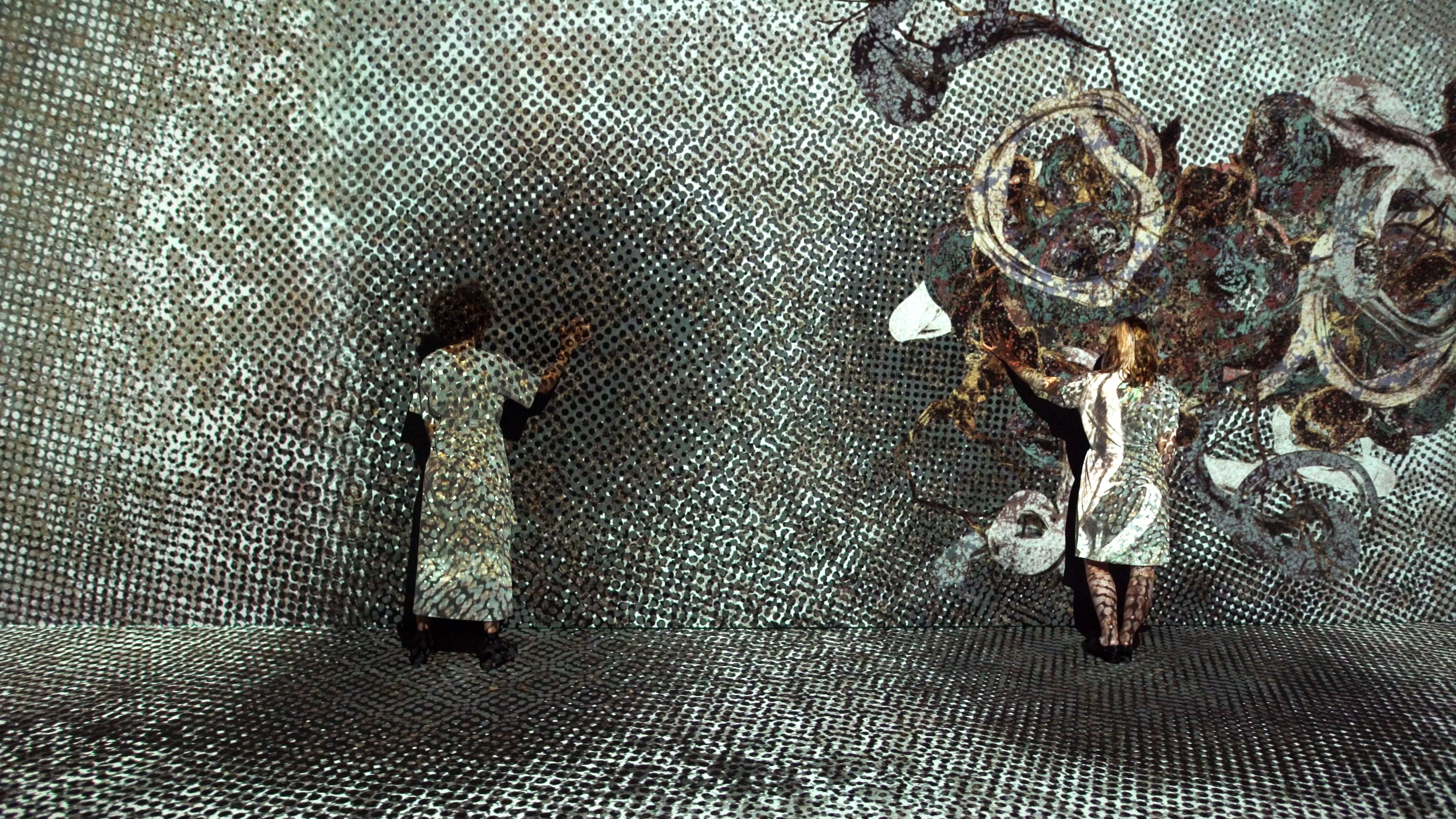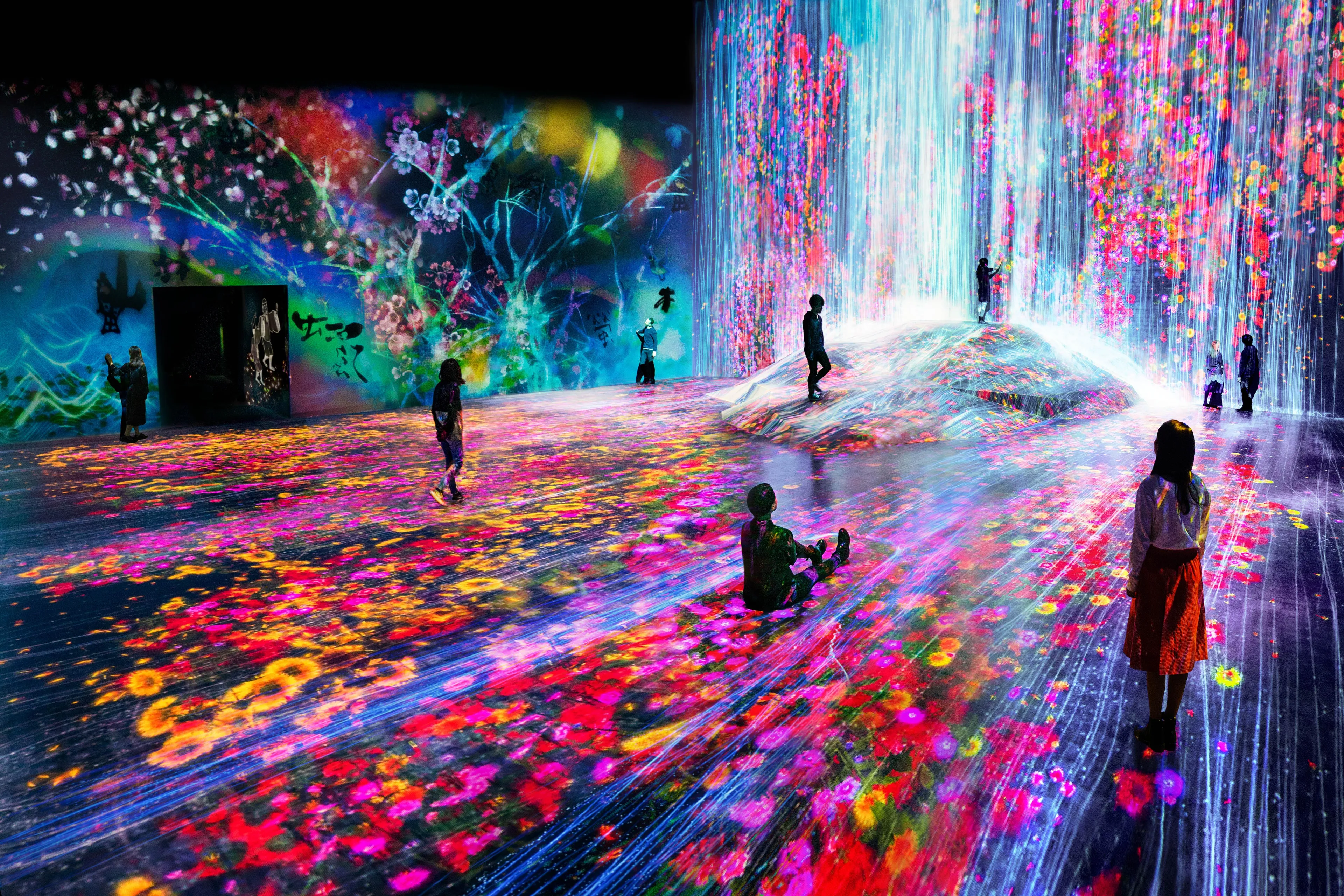
Relationships Among People
2001
FEATURED WORKS

Flowers and People, Cannot be Controlled but Live Together – Kunisaki Peninsula
teamLab, 2014, Interactive Digital Installation, Endless, Sound: Hideaki Takahashi
This is an art installation consisting of a walkway and a large open space that appears to go on for infinity.
The flowers bud, grow, and blossom before their petals begin to wither, and eventually fade away. The cycle of growth and decay repeats itself in perpetuity. The flowers are interactive, depending on the proximity of the viewer to the work, or if the viewer touches the flowers, the flowers simultaneously come to life, or shed their petals wither and die all at once.
The artwork is not a pre-recorded image that is played back: it is created by a computer program that continuously renders the work in real time. The interaction between people and the installation causes continuous change in the artwork: previous visual states can never be replicated, and will never reoccur. The picture at this moment can never be seen again.
In spring in the Kunisaki Peninsula, there are many cherry blossoms in the mountains and canola blossoms at their base. This experience of nature caused teamLab to wonder how many of these flowers were planted by people and how many were native to the environment. It is a place of great serenity and contentment, but the expansive body of flowers is an ecosystem influenced by human intervention, and the boundary between the work of nature and the work of humans is unclear. Rather than nature and humans being in conflict, a healthy ecosystem is one that includes people. In the past, people understood that they could not grasp nature in its entirety, and that it is not possible to control nature. People lived more closely aligned to the rules of nature that created a comfortable natural environment. We believe that these valleys hold faint traces of this premodern relationship with nature that once existed, and we hope to explore a form of human intervention based on the premise that nature cannot be controlled.

What a Loving, and Beautiful World
Sisyu + teamLab, 2011-, Interactive Installation, Endless, Calligraphy: Sisyu, Sound: Hideaki Takahashi
글자마다 각자의 세계가 있다. 사람들이 글자에 손을 대면, 그 글자만의 세계가 나타나며, 이들이 서로 영향을 주고 받으며 하나의 세계를 만들어 간다. 비나 눈, 꽃들은 바람의 영향을 받으며, 새들은 나무에 앉고, 나비는 꽃을 찾아 날아든다.
다른 작품이 글자에 닿아도 그 글자만의 세계가 나타난다. 사람들에 의해 생겨난 세계가 또 다른 사람들이나 다른 작품에 의해 생겨난 세계와 영향을 주고 받으며 새로운 그림을 만들어 간다.
지금 이 순간에 나타난 모습은 두 번 다시는 경험할 수 없다.
작품은 때때로 아주 멀리까지 퍼져나가기도 한다.

teamLab, 2018, Interactive Digital Installation, Sound: Hideaki Takahashi
In the background, cherry blossoms bloom and scatter, the cycle of life and death repeats itself.
As people come in contact with the space, a circle is born and grows to radiate at a certain rhythm and a specific interval. The circle born transforms only the light and darkness of the background world.

teamLab, 2014, Interactive Digital Installation + Light Sculpture, LED, Endless, H: 14700mm W: 17200mm D: 3840mm, Concept design, production and execution supervisor: DEM inc.
Rain falls from the sky; the rain creates waterfalls; the waterfalls turn into rivers, helping the flowers grow and blossom on the land. Birds gather near flowers and trees, flying into the sky where the clouds form and float away. Everything is connected in a cycle, but no events are ever repeated in exactly the same way.
Neither a prerecorded animation nor on loop, the work is rendered in real time by a computer program. It continuously changes its appearance in line with the influence of external data such as viewer behavior, the time of day, seasons, temperature, weather, and various other parameters within the CTBC Financial Park, Taipei.
Just as no natural landscape ever looks the same twice, this artwork never replicates the same state, thus creating new scenery forever.


